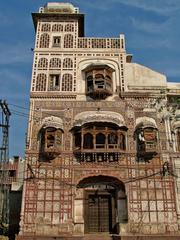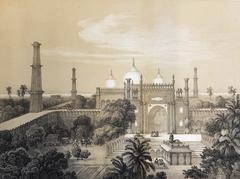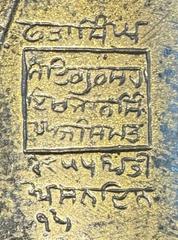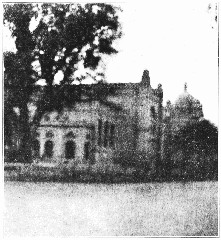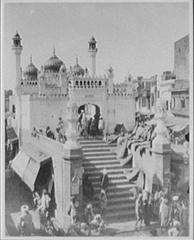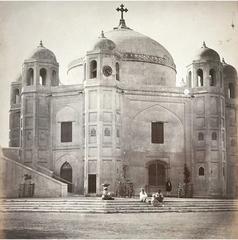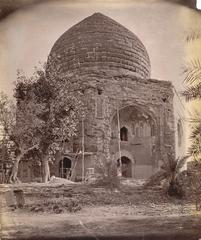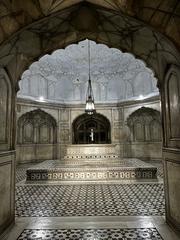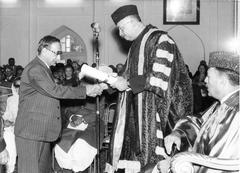
Tomb of Shah Jamal Lahore: Visiting Hours, Tickets, and Historical Significance
Date: 04/07/2025
Introduction
The Tomb of Shah Jamal is one of Lahore’s most iconic Sufi shrines, blending spiritual devotion, architectural heritage, and cultural vibrancy. Revered as the final resting place of Syed Shah Jamal Uddin Naqvi Bukhari (1588–1671), a prominent Sufi saint from the Mughal era, the shrine draws thousands of devotees, spiritual seekers, and tourists (Wikipedia). Located near Muslim Town and Old Anarkali, opposite Forman Christian College, it stands as a living testament to Lahore’s Sufi traditions, hosting weekly dhamaal trance dances, mehfil-e-sama (devotional music), and the grand annual Urs festival (Qantara.de; Lost With Purpose).
This guide offers detailed information for visitors, including practical tips, historical context, visiting hours, ticket policies, accessibility, architectural features, and the shrine’s enduring cultural significance.
Table of Contents
- Introduction
- Historical Overview
- Shrine Evolution and Architecture
- Visiting Hours, Tickets, and Accessibility
- Weekly Rituals and Special Events
- Guided Tours and Photography
- Cultural and Spiritual Significance
- Shrine Layout and Facilities
- Architectural Highlights
- Ritual Spaces and Activities
- Security and Modern Modifications
- Visitor Tips and FAQs
- Nearby Attractions
- Conclusion
- References
Historical Overview
Shah Jamal was a descendant of Makhdoom Syed Sadruddin Rajan Qattaal and closely connected to the Qadriyya, Suhrawardiyya, and Chishtiyya Sufi orders (Wikipedia). He lived during Emperor Akbar’s reign and opposed the syncretic Din-i-Ilahi, instead championing orthodox Islamic principles. His influence shaped Lahore’s spiritual landscape, and his tomb, established in 1671, quickly became a focal point for Sufi gatherings and community events.
Shrine Evolution and Architecture
Set in the heart of historic Lahore, the shrine’s architecture is a blend of Mughal and Punjabi influences—modest, yet spiritually charged. The central tomb chamber is surrounded by courtyards, a mosque, and ancillary spaces for gatherings. Recent urban developments, such as the Orange Metro Line, have increased the shrine’s visibility but also introduced new challenges in accessibility and security (Lost With Purpose).
Visiting Hours, Tickets, and Accessibility
- Visiting Hours: Daily, 6:00 AM – 10:00 PM. The most vibrant period is Thursday night during the weekly dhamaal.
- Entry Fee: Free; donations are welcome for maintenance.
- Accessibility: The shrine is accessible via car, taxi, public transport, and ride-hailing apps. However, narrow lanes and steps may pose challenges for those with mobility impairments.
- Parking: Limited. Use of public transport is recommended.
Weekly Rituals and Special Events
Thursday Night Dhamaal
The highlight is the Thursday night dhamaal—a rhythmic, trance-inducing dance accompanied by dhol drummers. The legacy of legendary drummers like Pappu Sain endures, drawing a diverse crowd (Adventure.com). The atmosphere is immersive, with incense, music, and the shared energy of devotion.
Annual Urs Festival
The Urs, held on the 3rd–5th of Rabi’ al-Thani, commemorates Shah Jamal’s death anniversary. It features qawwali, communal prayers, food distribution (langar), and special women’s rituals like the saib ka sehra (garland of apples), rooted in local folklore (Syed Sachal Hussain’s blog).
Guided Tours and Photography
While there are no formal guided tours, local guides and caretakers (khadims) often share insights into the shrine’s history and rituals. Photography is generally allowed in public spaces—especially the courtyard during dhamaal—but always seek permission before photographing individuals, and be discreet during religious ceremonies.
Cultural and Spiritual Significance
The shrine’s openness fosters inclusivity, welcoming devotees of all backgrounds. It exemplifies the harmonious coexistence of orthodox Islamic teachings and folk Sufi practices—an interplay visible in both ecstatic rituals and the daily rhythm of shrine life (Lahore Bay).
The custodianship (Sajjada Nasheen) is currently held by Dr. Pir Syed Ali Hussain Shah Naqvi, who oversees spiritual and community affairs (Wikipedia).
Shrine Layout and Facilities
- Location: Ichhra neighborhood, accessible via winding urban lanes.
- Layout: Central tomb chamber, courtyard for gatherings, adjacent mosque, verandas, arcades, and shops.
- Facilities: Public restrooms, food stalls, and shops selling devotional items.
- Women’s Spaces: Separate courtyard with a view of the tomb, tree-tying rituals, and ablution area.
Architectural Highlights
- Tomb Structure: Brick and lime plaster, rectangular chamber, modest dome, adorned with green cloth and Islamic calligraphy.
- Courtyard: Spacious, paved for gatherings, shaded arcades on the periphery.
- Mosque: Simple, whitewashed, aligned towards Mecca.
- Decorative Elements: Green cloth (Sufi symbolism), blue and green painted dome, calligraphic inscriptions.
- Security: Concrete barriers, checkpoints, surveillance—reflecting modern security needs (Lost With Purpose).
Ritual Spaces and Activities
- Dhamaal: Thursday night trance dance, open to all, with renowned drummers.
- Qawwali: Mehfil-e-sama (spiritual music sessions) on special nights.
- Women’s Rituals: Tree-tying, saib ka sehra, prayers for fertility and blessings.
- Urs Festival: Massive gatherings, dhol performances, communal meals, and vibrant decorations.
Security and Modern Modifications
Increased security—concrete blockades, metal detectors, armed guards—has changed the shrine’s ambiance but is necessary for protection. Despite these changes, the spiritual core and ritual life remain vibrant (Lost With Purpose).
Visitor Tips and FAQs
- Dress Modestly: Long sleeves, trousers, and headscarves for women.
- Remove Shoes: Before entering prayer areas.
- Best Time to Visit: Thursday nights for dhamaal, or during Urs for the most vibrant atmosphere.
- Safety: Keep valuables secure; be mindful of crowds and personal belongings.
- Photography: Allowed in most areas, but always ask permission when photographing people.
Frequently Asked Questions:
- Q: What are the visiting hours?
A: 6:00 AM – 10:00 PM daily; Thursday night is most active. - Q: Is there an entry fee?
A: No, entry is free; donations are welcome. - Q: Can women enter the tomb?
A: Women have a separate courtyard with a view of the tomb. - Q: Is the shrine accessible for people with disabilities?
A: Limited accessibility due to steps and narrow paths. - Q: How do I get there?
A: Taxi, rickshaw, or public transport; Orange Metro Line serves nearby areas.
Nearby Attractions
Enhance your visit by exploring Lahore’s other historical sites:
Conclusion
A visit to the Tomb of Shah Jamal offers deep insight into Lahore’s spiritual heart, from Mughal-era heritage to living Sufi traditions. Whether witnessing the electrifying Thursday night dhamaal, participating in the Urs festival, or quietly absorbing the shrine’s ambiance, visitors become part of a centuries-old tradition of unity, devotion, and transcendence. Approach with respect, follow local customs, and immerse yourself in one of Pakistan’s most vibrant cultural landmarks.
For further guidance, download the Audiala app for up-to-date visitor information, cultural events, and interactive maps.
References
- Baba Shah Jamal – Wikipedia
- Islam in Pakistan: Land of Sufis – Qantara.de
- Sufi Dhamaal in Lahore – Lost With Purpose
- Dancing Dhamaal in Lahore – Adventure.com
- The Shrine of Baba Shah Jamal – Syed Sachal Hussain Blog
- Shrine of Shah Jamal – Wikipedia
- The Syed Family – Tomb of Shah Jamal History
- Mahnoor Amjad’s Account
- Trek Zone – Shrine of Shah Jamal, Lahore
- Orphaned Nation – Shah Jamal Darbar
- Lahore Tourism Development Corporation

